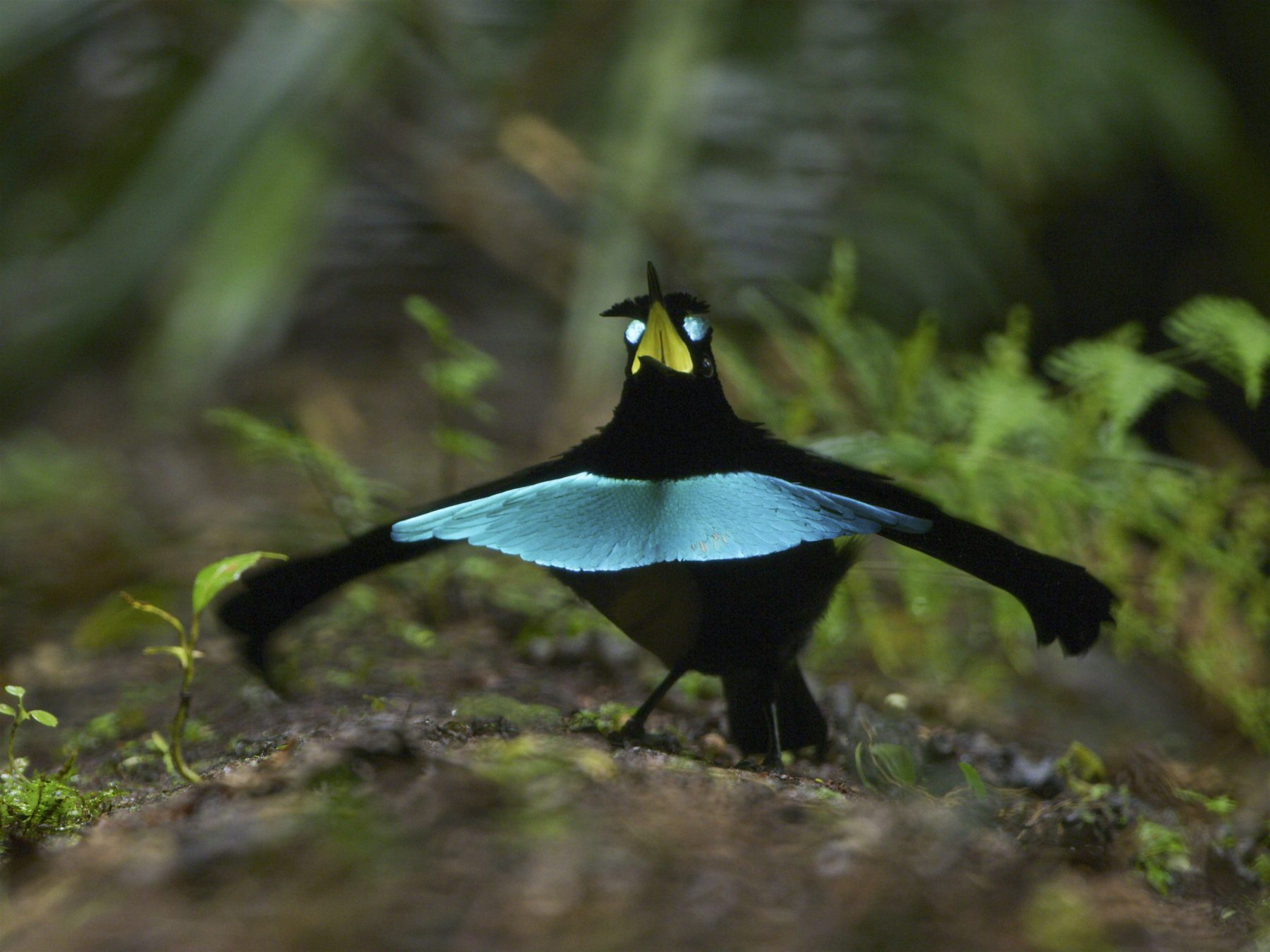Newly publicized audiovisuals support full species status for one of the dancing birds-of-paradise in New Guinea. This new species, called the Vogelkop Superb Bird-of-Paradise, is found only in the island’s far-western Bird’s Head, or Vogelkop, region. In a new paper published in the journal PeerJ, scientists “show and tell” half-a-dozen ways this form is distinct from the more widespread Superb Bird-of-Paradise, now called the Greater Superb Bird-of-Paradise—the bird known for its bouncy “smiley face” dance routine.
Vogelkop Superb Bird-of-Paradise Courtship Dance
“After you see what the Vogelkop form looks like and acts like in the wild, there’s little room for doubt that it is a separate species,” says Ed Scholes with the Cornell Lab of Ornithology’s Birds-of-Paradise Project. “The courtship dance is different. The vocalizations are different. The females look different. Even the shape of the displaying male is different.”
When expanded for courtship display, the Vogelkop male’s raised cape creates a completely different appearance—crescent-shaped with pointed tips rather than the oval shape of the widespread form of the species. The way the Vogelkop male dances for the female is also is distinctive, the steps being smooth instead of bouncy. You can learn more in this mini-documentary narrated by Ed Scholes.
The Cornell Lab’s Birds-of-Paradise Project (birdsofparadiseproject.org) is a research and education initiative to document, interpret, and protect the birds-of-paradise, their native environments, and the other biodiversity of the New Guinea region—one of the largest remaining tropical wildernesses on the planet.


